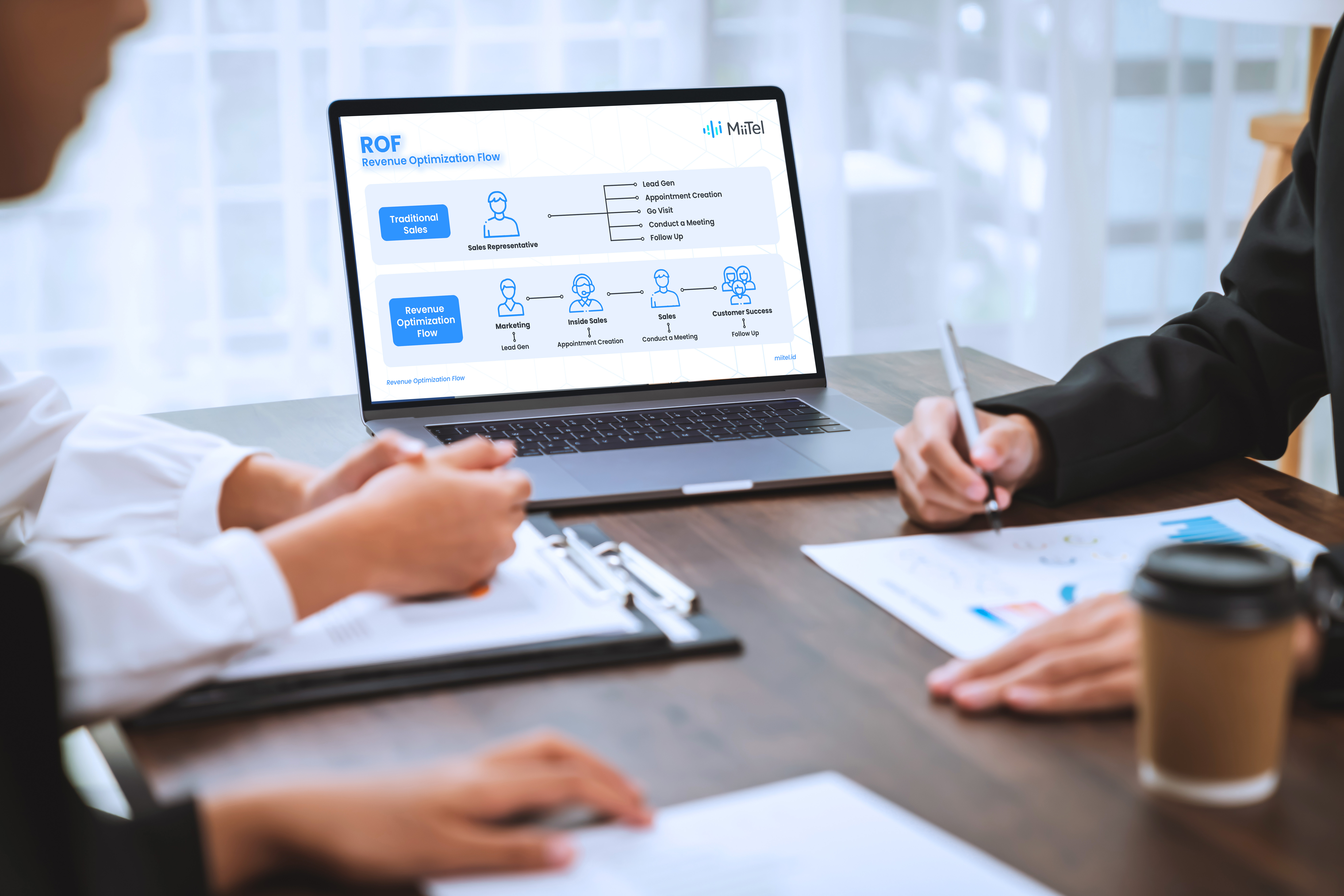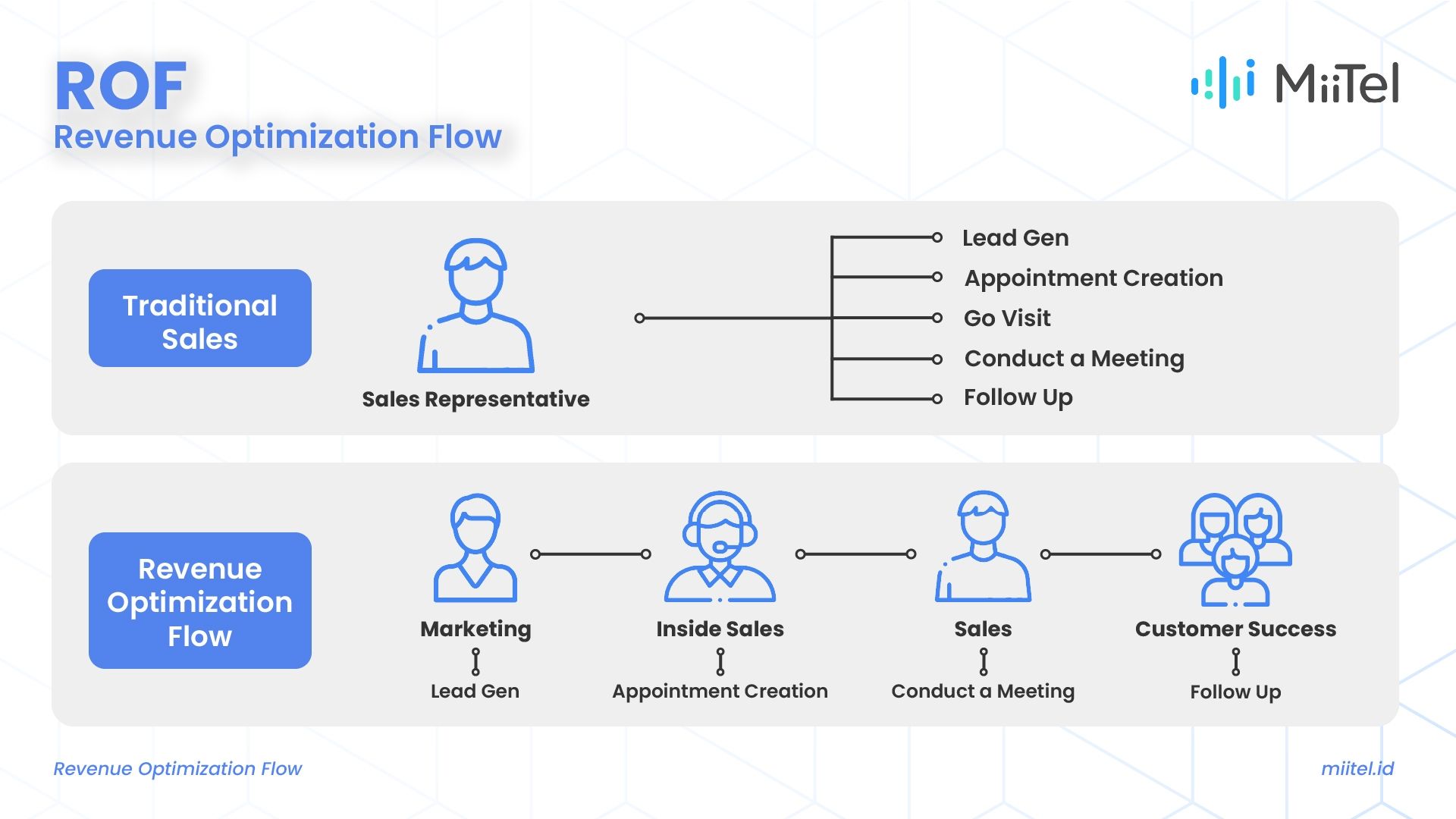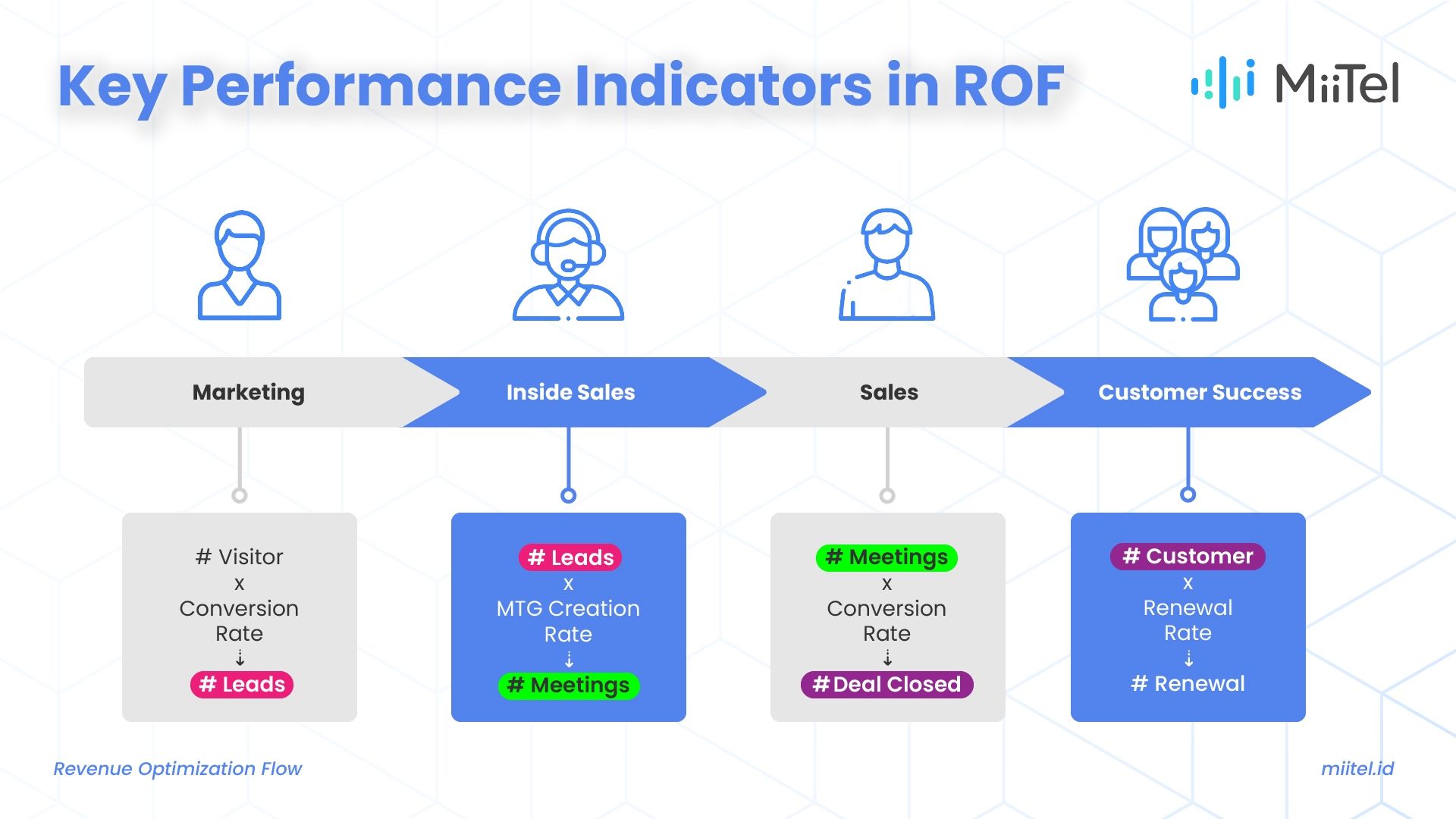Revenue Optimization Flow (ROF) is a strategy designed to enhance the performance of Sales teams in businesses by maximizing Sales tasks across four strategic functions: Marketing, Inside Sales, Sales Representative, and Customer Success.

RevComm, a rapidly growing Japanese technology company, unveils its groundbreaking sales strategy, the Revenue Optimization Flow (ROF). This strategy is quite common in the United States, Europe, and Japan, but it has yet to be widely adopted by companies in Southeast Asia.
In a traditional sales landscape, the sales team manages various functions, from lead generation to continuous follow-ups, dedicating significant time to secure a single contract. However, the evolving landscape, characterized by diversified products and the prevalence of subscription contracts, renders traditional strategies ineffective. Today’s sales success is no longer about securing high revenue from a single company but rather about accumulating sustained revenue from numerous companies. Recognizing this reality, Revenue Optimization Flow emerges to transform the sales strategy, making it more efficient and effective.

ROF strategically maximizes the sales team’s performance by categorizing sales tasks into four key functions: Marketing, Inside Sales, Sales Representative, and Customer Success. Each function collaborates like a relay race with easily manageable Key Performance Indicators (KPIs) set and monitored by the management.

Here is a breakdown of how businesses can optimize the ROF strategy:
1. Maximize Marketing to Generate Leads
Marketing is the business function responsible for generating and managing potential and qualified leads. This goal can be achieved through various efforts, including paid marketing such as social media ads, paid search, and display marketing. Additionally, organic marketing efforts like Search Engine Optimization (SEO) and User Generated Content (UGC) can be activated.
Include a Call to Action and optimize access so that leads exposed to the marketing strategy can take the next step, such as visiting the website to fill out consultation and free demo forms or directly connecting with the company’s contact.
The marketing team can also organize various online or offline events to enhance communication and direct engagement with potential customers. Don’t forget to provide free demos or other great deals to each attendee.
2. Inside Sales: Engage Leads
Once the Marketing team successfully obtains data and contact information of leads, it’s time to hand over the business relay baton to the Inside Sales team.
The Inside Sales team consists of two key roles: Sales Development Representative (SDR) and Business Development Representative (BDR). The Sales Development Representative (SDR) is responsible for engaging leads and creating meeting opportunities between leads and Sales Representatives to convert them into sales. SDRs also need to conduct hearings with leads to explore needs and the right approach for the meeting.
The Business Development Representative (BDR) aims to conduct research, identify target industries, create meeting opportunities for Sales Representatives, and conduct numerous cold calls to targeted leads.
3. Captivate Leads with Effective Pitching and Negotiation with Sales Representative
Once Sales Development Representatives (SDR) and Business Development Representatives (BDR) have secured appointments or meetings with potential customers, it is now the Sales Representative’s turn to convince the prospect more deeply. Sales Representatives are responsible for creating conversions, transforming prospects or potential customers into actual customers. This effort should be maximized in the shortest time possible while maintaining the highest possible conversion rate.
The Successful Sales Representative depends on various factors, with one crucial component being the structure of the sales pitch. Start the meeting with a warm and memorable introduction, present the problems and solutions the company can offer, conduct a consultation session where potential customers can discuss their needs or challenges, then proceed with a product demo based on the mentioned needs. End by sharing success stories of other customers, providing pricing information, and offering another consultation session with the customer to ensure product considerations.
4. Build Customer Retention with the Customer Success Team
Sometimes companies focus too much on acquiring new customers and forget to retain existing ones. This is where the Customer Success team plays a crucial role. Their roles include maximizing opportunities for upselling, minimizing downselling, and reducing customer churn rates.
Once a Sales Representative has closed a deal with a customer, the Customer Success team takes over to handle and support the customer. This team conducts kick-off or onboarding meetings to help customers set their goals and install the product. The Customer Success team can also propose activities to secure new sales opportunities or introduce new departments.
The Customer Success team is responsible for maintaining engagement with customers while monitoring product usage to ensure that customers fully utilize the services. This can be achieved by regularly conducting review meetings, organizing various events to encourage customers to try more product features, and building a customer community to create relationship opportunities and introduce the product more widely.
Revenue Optimization Flow (ROF) is an alternative strategy to enhance Sales productivity in today’s businesses, especially when supported by advanced technology such as MiiTel, an AI-based smart telephone system and conversation analysis tool that can automatically record, transcribe, summarize, and provide data analysis for phone calls and online meetings. Interested in learning more? Claim your free demo now at miitel.id. Limited slots available!

This press release has also been published on VRITIMES
